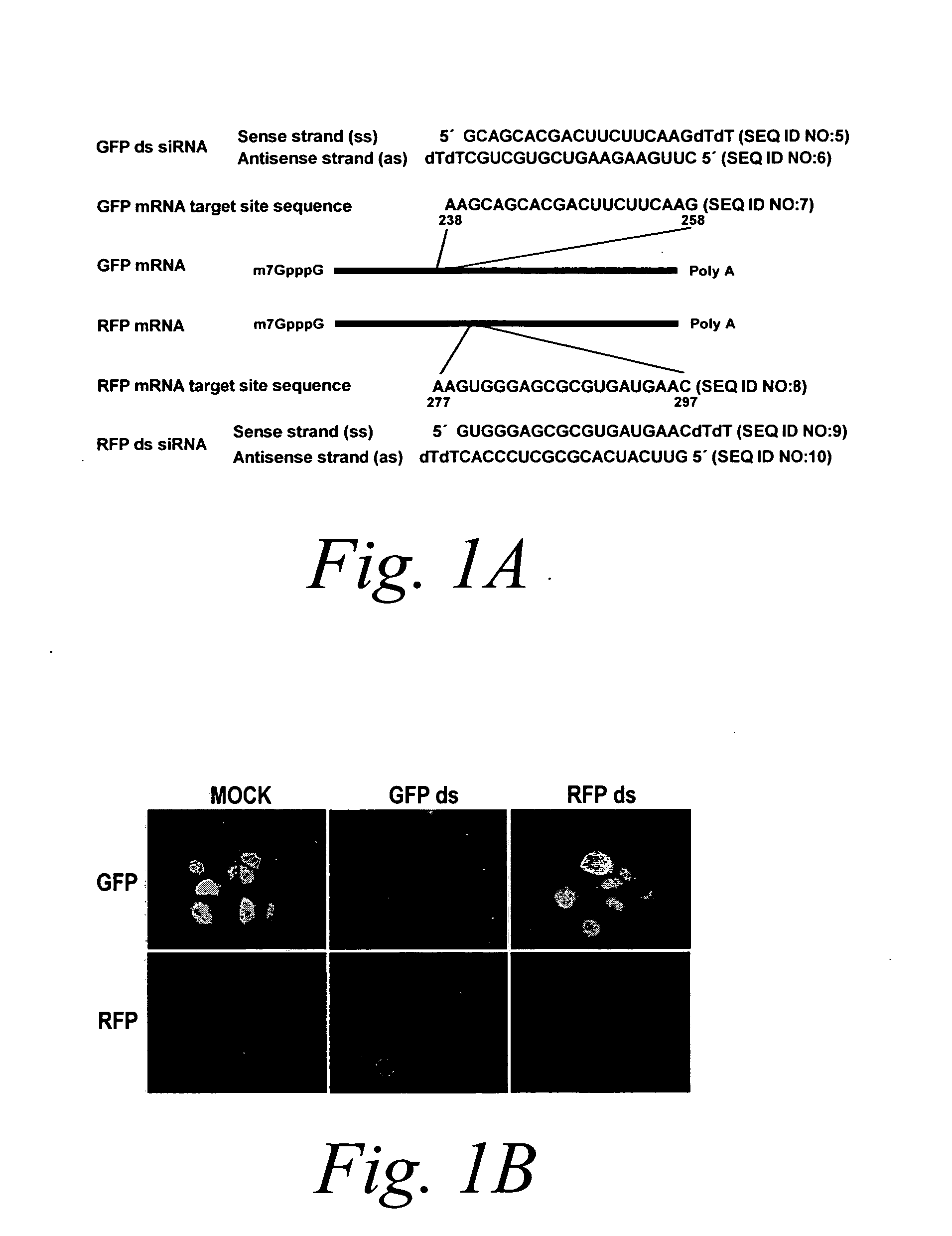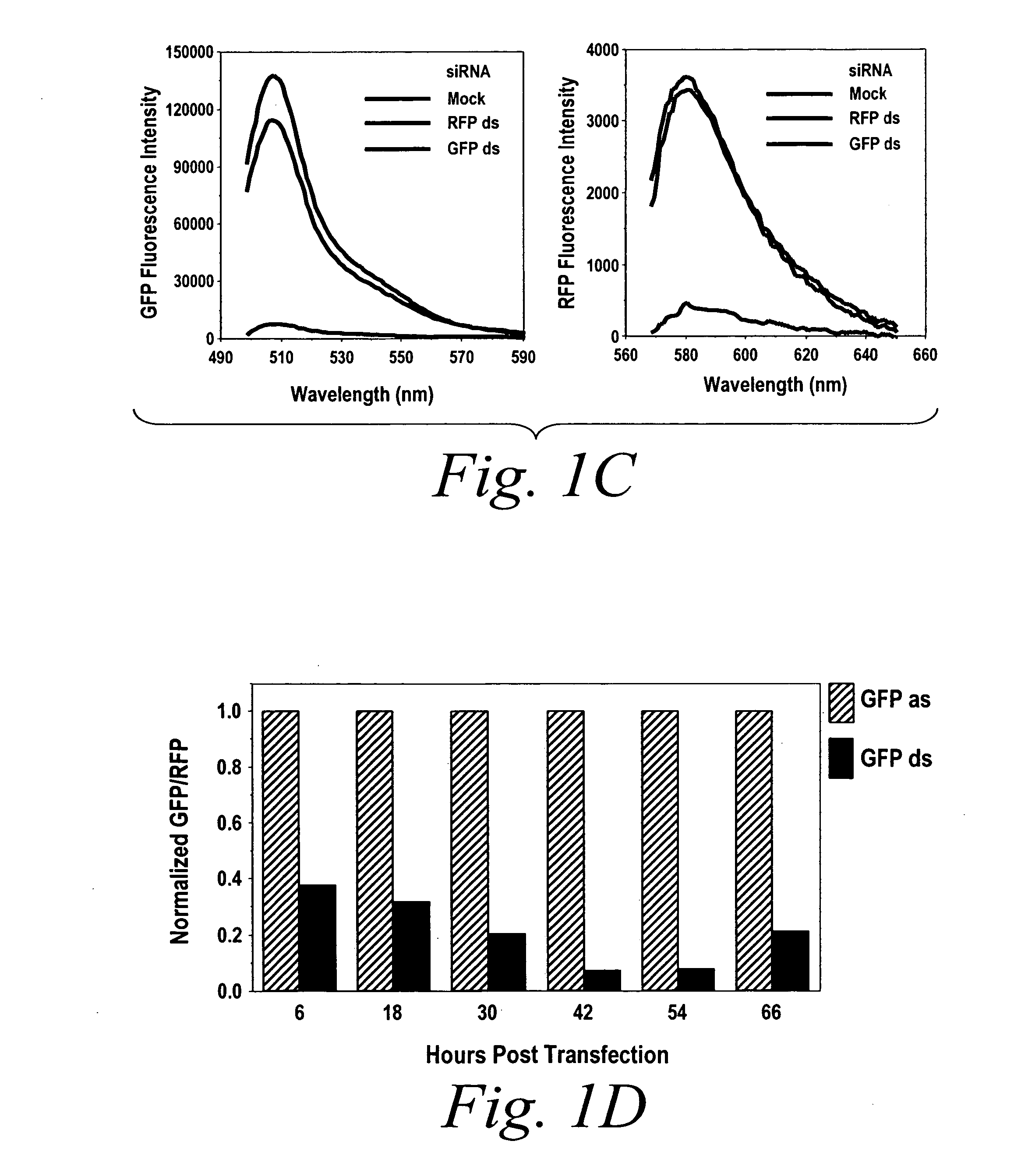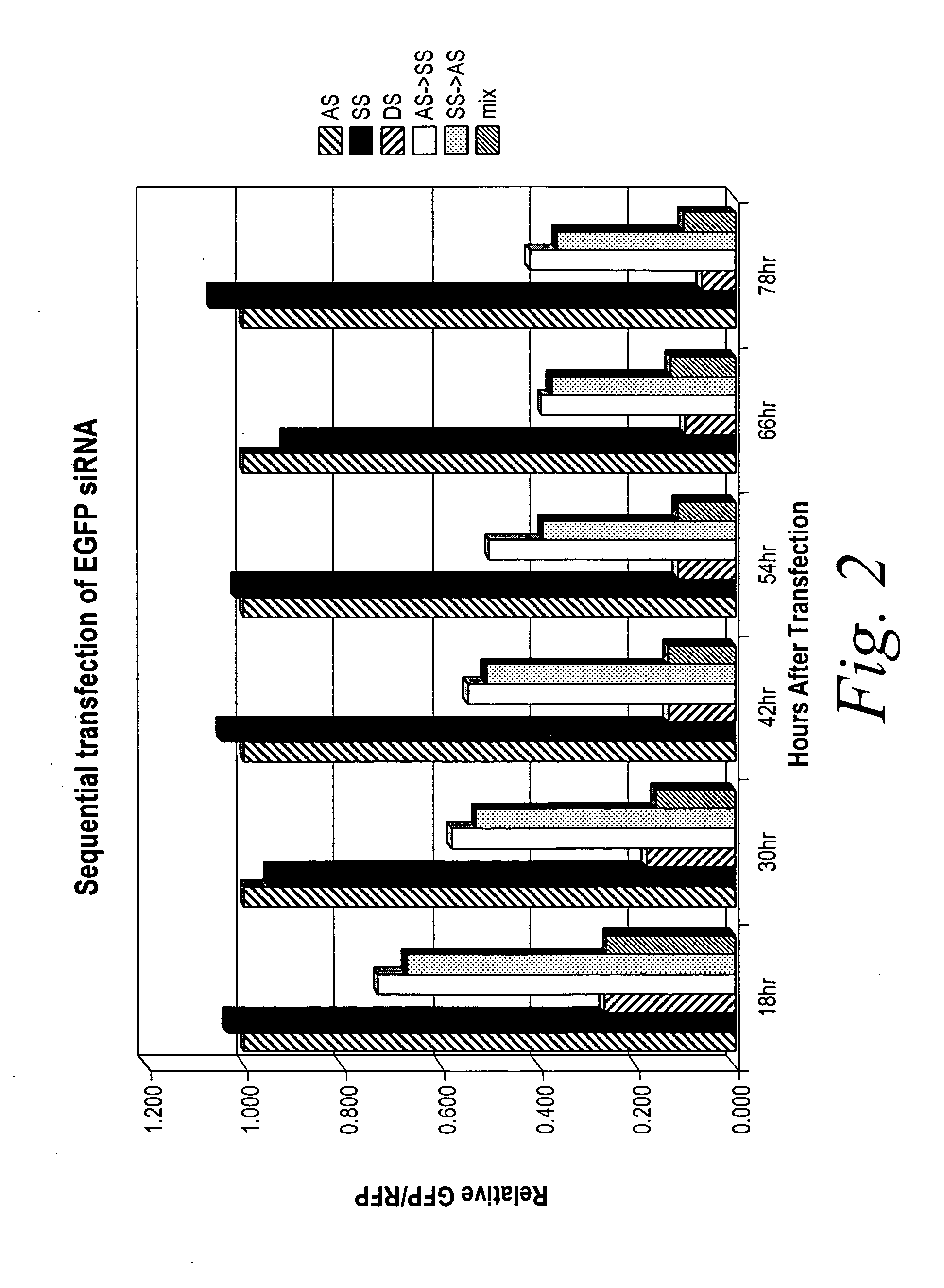Methods and compositions for mediating gene silencing
- Summary
- Abstract
- Description
- Claims
- Application Information
AI Technical Summary
Benefits of technology
Problems solved by technology
Method used
Image
Examples
example 1
Separate and Temporal Administration of RNAi / gene Silencing Agents are Effective and Bypass an Interferon Response
[0130] The following example describes methods for conducting RNAi / gene silencing without activating an interferon response pathway, by the separate and temporal administration of each single-strand of a double-stranded siRNA agent.
[0131] To determine the efficacy of sequential administration of each strand of a double stranded siRNA agent, the efficacy assay described above was used which indicates the amount of RNAi / gene silencing as a function of suppressed fluorescence as compared to an internal control (see FIG. 1). Cells were transfected as described above with either an antisense strand (AS), sense strand (SS), annealed antisense and sense duplex (DS), non-annealed antisense and sense duplex (mix), or first with the antisense strand and 3 to 6 hours later with the sense strand (AS>SS) or the reverse order (SS>AS) and the amount of suppressed fluorescence was mea...
example 2
Non-Canonical RNAi / gene Silencing Agents are Effective and Bypass Length and Overhang Requirements
[0133] The following example describes methods for conducting effective RNAi / gene silencing using non-canonical siRNA agents which bypass length and overhang requirements.
[0134] To determine the efficacy of the non-canonical siRNAs, the efficacy assay described above was used which indicates the amount of RNAi / gene silencing as a function of suppressed fluorescence as compared to an internal control (see FIG. 1). To determine siRNA length and overhang requirements, a panel of siRNAs having non-canonical length and / or overhangs was synthesized (see FIG. 3). As shown in FIG. 3, a canonical siRNA with 19 nucleotides of complementarity and having 5′ and 3′ dTdT canonical overhangs was tested along side selected test siRNAs having deletions of 1, 2, or 3 nucleotides and lacking at least one canonical overhang (see canonical siRNA labeled 1 and non-canonical test siRNAs labeled 2, 5, 8, and...
example 3
Modified siRNAs Reveal Stoichiometry of RNAi / gene Silencing Machinery
[0137] The following example describes methods for determining the amount of RISC present in a cell using modified siRNA agents.
[0138] Understanding the consequences of complex RNAi activities in mammalian cells is highly desirable. Accordingly, the invention also provides modified siRNA agents which can reveal the stoichiometry of RNAi / gene silencing machinery. In particular, by administering a titration of double-stranded siRNA nucleic acids having one or more nucleotide modifications, e.g., 2′-O-methylation, against an unmodified siRNA, a calculation of per cell amounts of RNAi activity, e.g., RISC activity, was determined.
[0139] Cells were transfected as described above with an siRNA agent wherein a percentage of each strand has been modified with a 2′O-methyl group at each nucleotide base. As shown in FIG. 5, when the test siRNA comprises increasing amounts of methylated siRNA, the amount of gene silencing ...
PUM
| Property | Measurement | Unit |
|---|---|---|
| Time | aaaaa | aaaaa |
| Time | aaaaa | aaaaa |
| Time | aaaaa | aaaaa |
Abstract
Description
Claims
Application Information
 Login to View More
Login to View More - R&D
- Intellectual Property
- Life Sciences
- Materials
- Tech Scout
- Unparalleled Data Quality
- Higher Quality Content
- 60% Fewer Hallucinations
Browse by: Latest US Patents, China's latest patents, Technical Efficacy Thesaurus, Application Domain, Technology Topic, Popular Technical Reports.
© 2025 PatSnap. All rights reserved.Legal|Privacy policy|Modern Slavery Act Transparency Statement|Sitemap|About US| Contact US: help@patsnap.com



